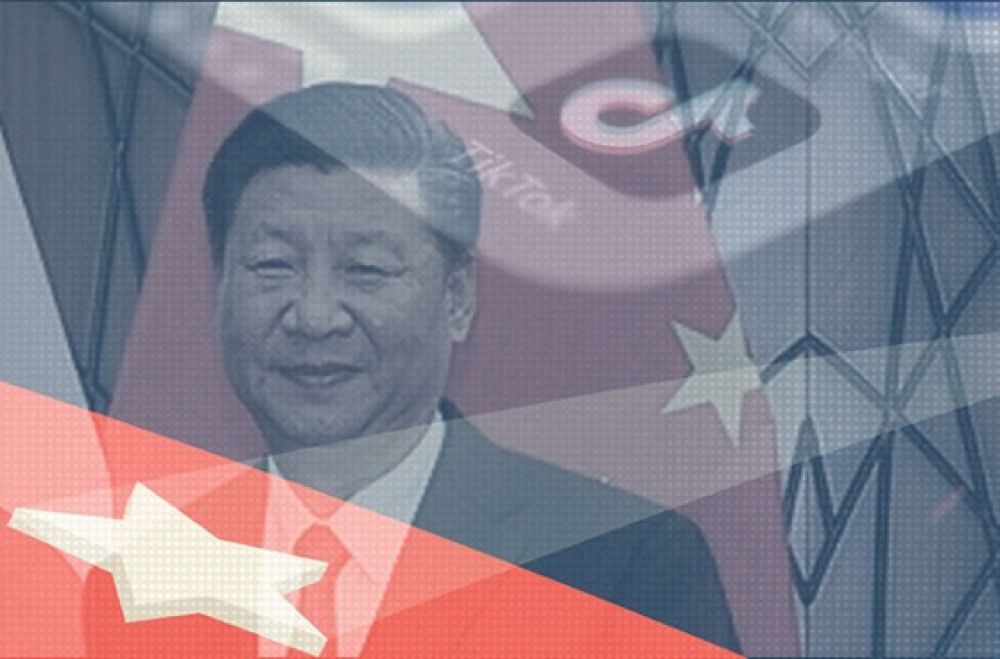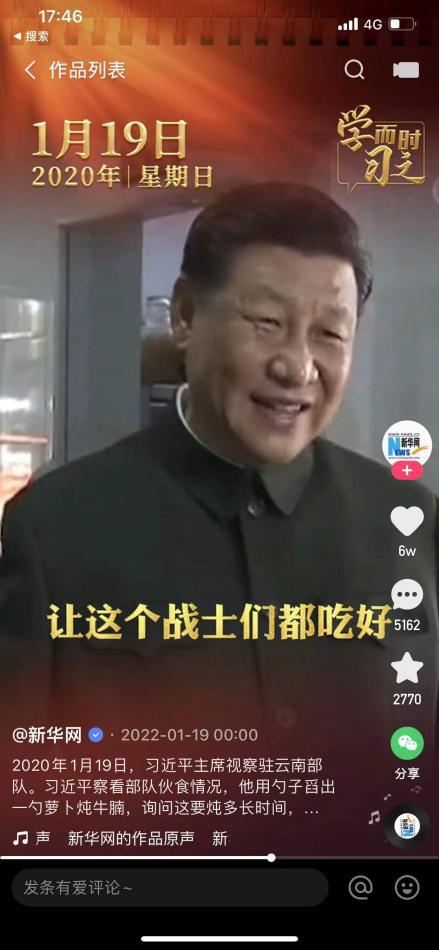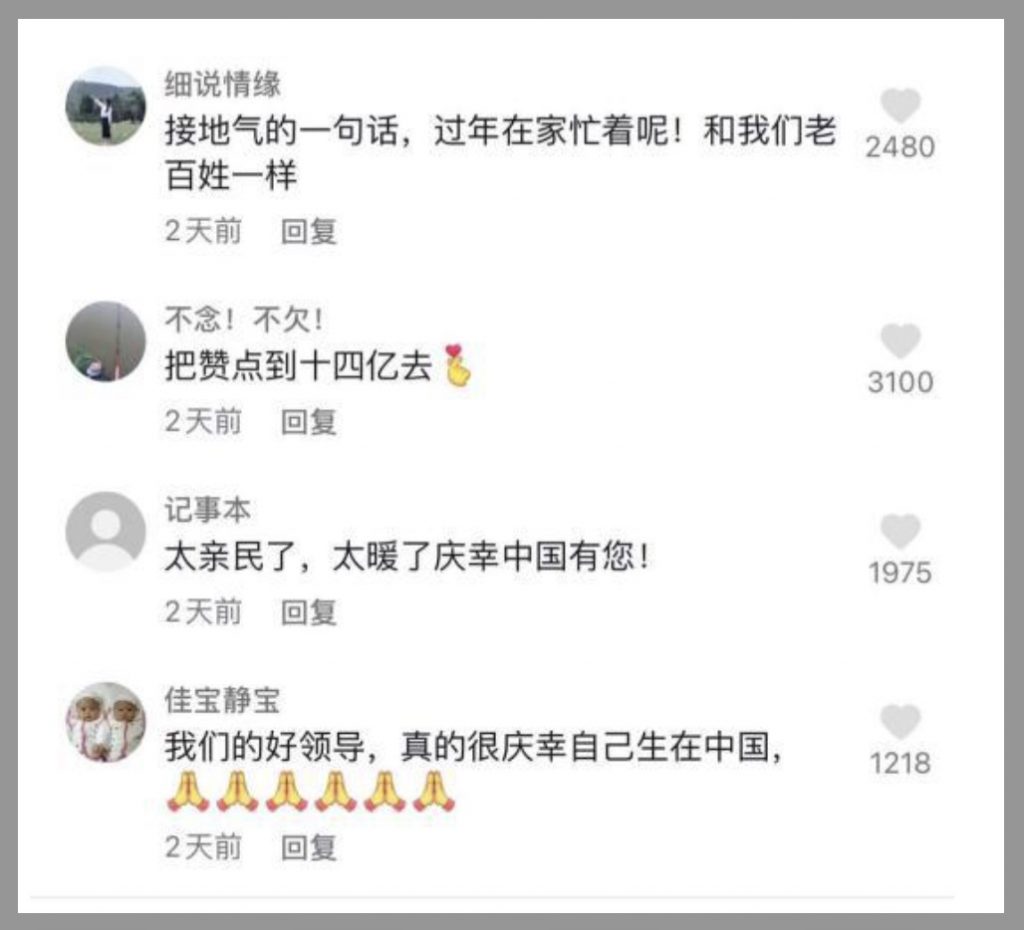
Composite of images of Xi Jinping (2017) and the TikTok app, available at Wikimedia Commons under CC license.
In the United States, TikTok has become a lively space for social and political activism, defining a “distinct and wide-ranging audiovisual vernacular” that has been applied to issues from police violence and LGBTQ rights. Back in China, where TikTok was born as “Douyin,” the popular video app created by the Beijing-based internet company Bytedance, collective political expression is strictly off limits. Posts on Douyin and other video-sharing apps focus on e-commerce, influencer networks and those fatuous acts of fleeting self-expression for which TikTok has become known in the West (though Douyin can also give rise to some interesting forms of consumer activism.)
But as the Chinese Communist Party has hammered home the need to develop “convergence” (融合发展) within the Party-dominated media ecosystem, Xi Jinping having stressed back in 2013 that mainstream media must advance and must not be “marginalized,” state media have taken self-innovation seriously. And that has made for interesting – if not always compelling – hybrid forms of propaganda for the TikTok age.
One “convergence” approach recently touted by Xinhua News Agency is called “Learning and Reviewing Xi” (学而时习之). The official CCP newswire claims that this product, whose name is a play on Xi’s surname inspired by a famous line from the Confucian classic The Analects (论语), has “deepened [its] understanding of the principles of the dissemination of core reports on mobile social platforms.” The Confucius reference, used in this political context, suggests that this mobile-based offering, available on Douyin (抖音), Kuaishou (快手) and WeChat Video (微信视频), will encourage the persistent study of Xi Jinping’s ideas.

Xinhua claims that “Learning and Reviewing Xi” has been a sensational success, “generating enthusiastic reactions from netizens and constant traffic.” As of January, the new short-video product, with just 30 posts, had generated more than 550 million views, 700,000 shares, 500,000 comments and 24 million “likes.” To put this into perspective, this would mean an average of 18 million views for each “Learning and Reviewing Xi” post. That would make the Xinhua product extremely viral, rivaling many of the strongest trending videos internationally on TikTok – with stiff competitors like stunt-performing cats and baby frog colonies.
So what new and inventive approaches is Xinhua taking? Are they offering video shorts of Xi Jinping’s furry friends (he is rumored to have pet dogs) frolicking through the Zhongnanhai compound? Let’s have a look.
Below is an image of the “Learning and Reviewing Xi” post on January 19, which in fact shares a story from two years earlier, as Xi Jinping was on an inspection tour of Yunnan province and visiting a border defense battalion of the People’s Liberation Army (PLA). There, he had a photo op in the canteen kitchen, where he stirred a pot of soup, smiled for the camera and said: “Let the fighters eat well. They are defending our homes and protecting our nation.”

Viewers of the “Learning and Reviewing Xi” post are treated to a short video of the scene, with Xi’s quotable words offered in shiny gold characters. They can “like” the post, share it to WeChat or comment. But there is no other magic here. Nothing that distinguishes the content from the thousands of other posts and news stories (and longer video segments already online). The other posts from Xinhua’s “Learning and Reviewing Xi” are equally boilerplate: a segment from a 2019 speech in which he tells provincial leaders they must “step over hardships to find the path”; a segment from a January 2020 speech in which he tells his Party comrades that, “Time belongs to those who strive, and history belongs to those who strive.”
Still, if we are to believe the story dished out by the official website of the All-China Journalists Association (ACJA), this series is a breakthrough, “effectively filling a gap in regular columns of core reporting on mobile social platforms.” Moreover, the series “effectively expands the reach (到达率) and readership (阅读率) of propaganda, so that positive energy (正能量) is transformed into major traffic.”
There is a lot here to be unpackaged. First of all, what does the ACJA piece mean by “core reporting,” or hexin baodao (核心报道)? Core is not about news value in the journalistic sense, but rather about Xi Jinping specifically, about the top leader who since 2016 has been formally designated as the CCP’s leadership “core,” a mark of his concentration of power. This becomes crystal clear when the ACJA piece tells us that the new Xinhua product has “created a new situation for core reports, highlighting the image of the General Secretary as a relatable and respectable leader of the people and a world leader.” As we note in our CMP Dictionary, the term “people’s leader” (人民领袖) is a rare title of praise in China’s political discourse, reminiscent of the personality cult that prevailed during the Mao Zedong era.
“Positive energy” is a term, in currency since 2013, that is synonymous with the control of information in order to avoid “negative,” or critical, news coverage and public opinion.
What we can gather from the ACJA article on “Learning and Reviewing Xi” is that the new Xinhua offering is innovative only in the sense that it transfers propaganda to new platforms, building up the image and prestige of Xi Jinping in ways that Mao Zedong could scarcely have dreamed of. As for accommodating the distinct audiovisual vernacular of the short-video platform culture, this is something that cannot so easily be accomplished – because the strictures of the Party-state media culture do not allow for creative departures. The result is familiarly insipid propaganda pitched for the user of mobile social media, but likely to be swiped aside.
Nevertheless, we are to believe that the short videos released through “Learning and Reviewing Xi” have been extraordinarily, stratospherically, popular. The ACJA article shares a selection of the more than 500,000 comments, each more revealing that the last.
“What grounded words,” one user writes. “It’s the New Year and he’s busy at home! Just like us ordinary Chinese.” Translation: Xi Jinping is a man of the people.
“So close to the people,” writes another, bringing the point right to the surface. “I’m so warmed that prosperous China has you!” Translation: Xi Jinping is a man of the people, and all happiness and goodness in the country owe to his solicitude for the masses.
“Our good leader,” yet another writes. “I’m so very fortunate to have been born in China.”

These are not natural comments, but rather were born of the propaganda system, where the leader must by definition be “close to the people” (亲民), “close to the ground” (接地气) and “warm” (温暖), even if there are no hot-mike moments and every interaction is ceremoniously scripted. Which brings us to the question of impact. When content that is decidedly untransmissible consistently goes viral, this naturally raises questions about whether and how that content is being artificially pushed. One of the most fascinating questions, therefore, is how exactly traditional propaganda outlets like Xinhua are working with commercially operating platforms like Douyin to re-shape their distribution channels and command attention (or its pretense) in cyberspace.
There is a lot of big talk in the ACJA piece on “Learning and Reviewing Xi” about innovation and pushing the envelope. But if Xinhua has made any advances at all in “understanding of the principles of the dissemination” through mobile social platforms in this case, the most that can be said is that it has grasped the elementary fact that short videos must be, well, short. This is nothing to write home about. And yet the ACJA has written thousands of words essentially praising the success of a campaign of praise.
Those who study CCP propaganda will be familiar with such circles of self-realization. Propaganda is deeply imbedded in the governance of the Party, its task to write the success story of every failure. And because propaganda is so essential to the Party’s vision of itself, it follows that propaganda too must be a success. Hence meta-propaganda is born, the story of the success of the story. Circles within circles within circles.





















